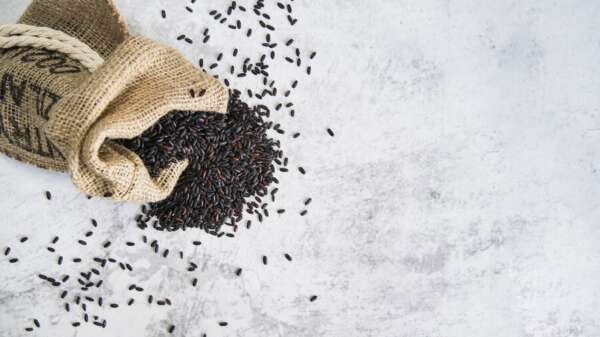Chitrak (Plumbago zeylanica) The Fiery Root of Ayurveda
Introduction
In the heart of tropical forests and village backyards across India grows a fiery little plant known as Chitrak (Plumbago zeylanica). With its woody root, slender stems, and delicate white flowers, Chitrak may not look imposing, but its reputation is anything but ordinary. Its name, derived from Sanskrit, translates to “spotted” or “variegated”, often symbolizing its potent and multi-faceted powers. This perennial shrub thrives in India, Sri Lanka, Southeast Asia, and even parts of Africa. For centuries, healers have turned to its powerful root to stoke the digestive fire, cleanse toxins, and restore balance to the body.
Why should you care about Chitrak today? Because this plant sits at the crossroads of tradition and modern wellness. From ancient Ayurvedic scriptures describing it as a remedy for sluggish digestion and skin ailments, to modern research exploring its antioxidant and anti-inflammatory properties, Chitrak continues to intrigue both herbalists and scientists. In an age where natural remedies are being rediscovered, Chitrak is gaining new attention for its ability to kindle inner strength, detoxify the system, and perhaps even play a role in managing chronic conditions.
7 Best Alternatives to Chitrak (Plumbago zeylanica)
Sometimes, Chitrak may not be accessible or suitable for everyone. Here are seven natural alternatives used in similar ways across regions:
- Ginger (Zingiber officinale) – India & Worldwide
Known as Adrak in India, ginger is one of the most common substitutes for Chitrak in digestive care. Its spicy root improves appetite, stimulates digestion, and reduces nausea. Cultivated widely across Asia, ginger has become a global kitchen staple and medicinal powerhouse. - Long Pepper (Piper longum) – South Asia
Long pepper, or Pippali, is an Ayurvedic favorite for boosting metabolism and clearing respiratory blockages. Like Chitrak, it kindles the digestive fire (agni) and is often used in formulations for sluggish digestion and respiratory disorders. - Turmeric (Curcuma longa) – India
Golden turmeric, or Haldi, doesn’t just spice up food; it purifies blood, heals wounds, and reduces inflammation. While gentler than Chitrak, turmeric is widely used in detoxifying remedies across Indian households. - Black Pepper (Piper nigrum) – Kerala, India
Often called the king of spices, black pepper enhances bioavailability of other herbs, aids digestion, and stimulates circulation. It’s especially valued in South Indian medicine systems. - Aconite Root (Aconitum heterophyllum) – Himalayan Region
Known in Ayurveda as Ativisha, this herb is milder yet effective in improving digestion and combating fevers. Traditionally found in the Himalayan regions, it’s used for balancing metabolism. - Cayenne Pepper (Capsicum annuum) – Central & South America
From the Americas, cayenne pepper provides fiery energy similar to Chitrak. Its capsaicin content stimulates circulation, aids digestion, and clears toxins from the body. - Horseradish (Armoracia rusticana) – Europe
In Europe, horseradish root has been used for centuries as a digestive stimulant and decongestant. Much like Chitrak, it provides a sharp, heating action that clears stagnation in the system.
When and Where
Chitrak carries with it a fascinating journey through time and place. Traditionally, this shrub is harvested when the root has matured enough to store its fiery potency, often during the post-monsoon season. The rains allow the plant to flourish, but once the soil begins to dry, healers dig deep to unearth the reddish-brown root that holds the essence of its medicinal fire.
Geographically, Chitrak thrives in tropical and subtropical regions. In India, it is commonly found in states like Kerala, Tamil Nadu, and West Bengal, growing along forest edges, roadsides, and even in home gardens. Beyond India, it flourishes across Sri Lanka, Myanmar, and parts of Africa where similar climates support its growth. This wide distribution speaks to its adaptability and value across cultures.
Traditionally, Chitrak was sourced directly by local herbalists who carefully cleaned, dried, and powdered its roots for medicinal use. In villages, it wasn’t unusual for families to keep a patch of Chitrak growing at home, ensuring easy access when digestive troubles or skin conditions struck. In modern times, however, Chitrak is often farmed and processed into capsules, powders, and tinctures for wider consumption.
Culturally, it was revered in Ayurveda as one of the best herbs for deepana (appetite stimulation) and pachana (digestion). Varieties of Chitrak include the red-flowered species (Plumbago indica), often considered even more potent, and the white-flowered Plumbago zeylanica. Together, they paint a story of an herb that has traveled across geography and time, finding its place in both rustic kitchens and modern wellness clinics.
Who Uses Chitrak (Plumbago zeylanica)?
Chitrak has long been a favorite among Ayurvedic healers, who prescribe it for digestive imbalances, sluggish metabolism, and skin issues. In Siddha medicine of Tamil Nadu, Chitrak plays a prominent role in detoxification therapies. Traditional midwives often turned to it in postnatal care to restore strength and improve appetite.
Outside of India, African communities use Chitrak in folk remedies for rheumatism, infections, and intestinal issues. Today, herbalists across the world are also embracing Chitrak in tinctures and dietary supplements, especially for detox and weight management. Its fiery energy resonates with those who seek to ignite their inner vitality.
Why Use Chitrak (Plumbago zeylanica)?
People seek Chitrak because it offers more than just a cure — it offers transformation. Its primary uses lie in stimulating digestion, expelling toxins, and enhancing circulation. For those suffering from indigestion, bloating, or poor appetite, Chitrak acts as a natural igniter of the digestive flame.
Beyond digestion, it is valued for supporting weight management, purifying the skin, and even addressing chronic conditions like arthritis due to its anti-inflammatory action. Spiritually, it is seen as an herb that removes stagnation — both in the body and mind — bringing clarity and energy. For many, Chitrak is not just a plant but a catalyst for renewal.
Which Parts of Chitrak (Plumbago zeylanica) Are Used?
The root is the star of Chitrak. It is dried, powdered, and used in numerous Ayurvedic formulations for digestive and metabolic disorders. However, the leaves are also applied externally to treat skin conditions and swellings. The stem and bark occasionally find use in traditional remedies, though far less than the potent root. Each part of the plant has its unique properties, but the fiery energy of Chitrak truly resides in its underground root system.
How to Use Chitrak (Plumbago zeylanica)?
Traditionally, Chitrak root powder is consumed with honey, ghee, or warm water to stimulate digestion. It is often included in classical formulations like Chitrakadi Vati, designed to balance sluggish digestion and improve metabolism. Externally, Chitrak paste may be applied on swollen joints or skin conditions, though with great caution due to its potency.
In modern times, Chitrak is available as capsules, tablets, and tinctures. However, dosage must be carefully controlled, ideally under the guidance of an Ayurvedic practitioner. Excessive use can cause irritation, ulcers, or toxicity. A golden rule when using Chitrak is moderation — its fire is healing when balanced, but harmful if misused.
Important Facts About Chitrak (Plumbago zeylanica)
- Botanical Details: Belongs to the Plumbaginaceae family; a perennial shrub with white flowers and woody roots.
- Active Compounds: Contains plumbagin, a bioactive compound responsible for its medicinal heat.
- Research Findings: Studies suggest plumbagin has anti-inflammatory, antimicrobial, and anticancer potential.
- Traditional Role: Revered in Ayurveda for agni deepana (igniting digestive fire) and ama pachana (removing toxins).
- Cautions: Overdose may cause gastric irritation, mouth ulcers, or toxicity. Pregnant women should avoid its use.
FAQs on Chitrak (Plumbago zeylanica)
1. Is Chitrak safe to use?
Yes, but only in small, controlled doses under expert guidance.
2. Can Chitrak help with weight loss?
Yes, by stimulating digestion and metabolism, it supports healthy weight management.
3. Where can I buy Chitrak?
It is available in Ayurvedic stores, herbal markets, and online wellness platforms.
4. How quickly does Chitrak show effects?
For digestion, effects can often be felt within a few days, but chronic issues may take weeks.
5. Are there any side effects?
Overuse may cause gastric irritation, ulcers, or toxicity. Always follow professional advice.
6. Can Chitrak be applied externally?
Yes, but cautiously, often in paste form for skin issues or joint pain.
7. Are there different varieties of Chitrak?
Yes, primarily white-flowered (Plumbago zeylanica) and red-flowered (Plumbago indica).
Conclusion
Chitrak (Plumbago zeylanica) is not just an herb — it is a story of fire, transformation, and healing. From the backyards of Indian villages to the pages of modern scientific journals, it has carried its legacy as a purifier, a stimulator, and a restorer of balance. Its fiery root has helped countless generations overcome digestive struggles, regain vitality, and clear stagnation from their systems.
Yet, like fire itself, Chitrak must be handled with respect. It can heal when guided by wisdom, but harm if misused. For those who seek to reconnect with the power of nature, Chitrak offers a profound reminder: within the earth lies a fire that can reignite our own. Used responsibly, it remains one of Ayurveda’s greatest gifts to the world of natural wellness.


